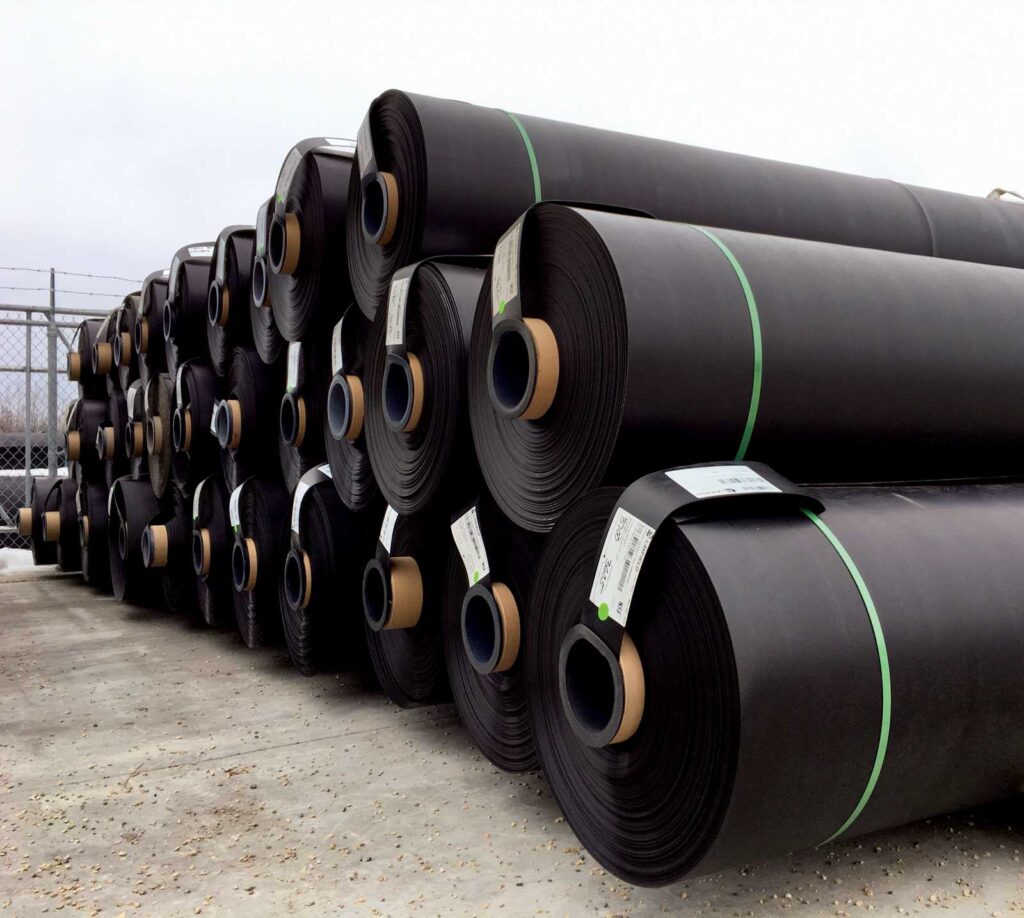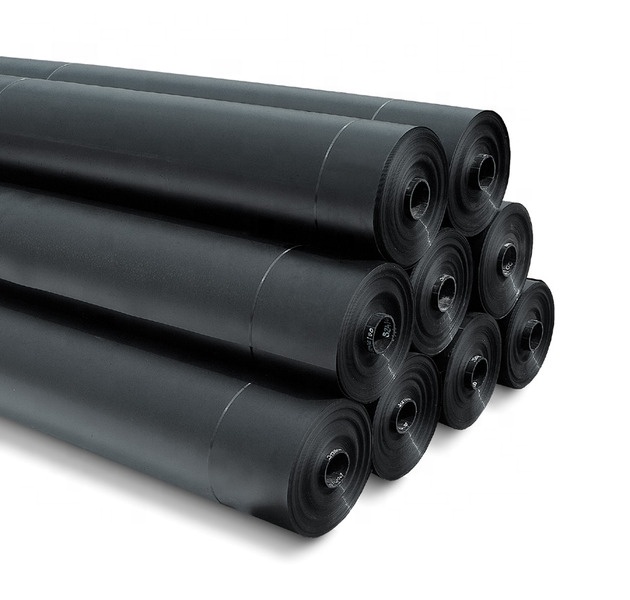How does geomembrane prevent seepage?
Geomembrane is a film made of polymer materials such as high-density polyethylene (HDPE) or polypropylene (PP), which is commonly used in anti-penetration and soil protection projects. It has the following ways to achieve anti-seepage function:
High-density polymer material: The geomembrane is made of high-density polymer material, which has excellent sealing and anti-penetration properties. The molecular structure of high-density polymer materials is dense, which can effectively prevent the penetration of moisture and leaking liquids.
Physical barrier effect: Geomembrane can prevent the passage of penetrating liquid through its fine pore structure and molecular spacing. Its barrier effect is based on the physical properties of the material itself, effectively preventing the penetration of leaking liquids.
Film continuity: The film made of geomembrane is continuous and dense, without pores or cracks. This allows it to act as a complete barrier, preventing liquids from penetrating beneath the geomembrane.
Resistance to chemical corrosion: Geomembranes usually have certain chemical corrosion resistance and can resist the erosion of acids, alkalis, salts, chemicals and other substances, thereby maintaining the stability of their anti-seepage properties.
Strength and durability: Geomembranes usually have high tensile strength and durability and can withstand certain loads and external pressures. This ensures that the integrity and anti-seepage performance of the geomembrane are not compromised during construction and use.
It should be noted that in addition to the characteristics of the material itself, the anti-seepage ability of the geomembrane is also closely related to its correct installation and maintenance. Correct construction and reasonable joint treatment can ensure the integrity and continuity of the geomembrane system and provide reliable anti-penetration effect.
In short, geomembranes achieve anti-seepage functions through the characteristics of high-density polymer materials, physical barriers, continuity, resistance to chemical corrosion, and strength and durability. This makes it widely used in many anti-seepage projects and effectively prevents leakage liquid from contaminating soil and water bodies.

What should you pay attention to when installing geomembrane?
During the installation process of geomembrane, the following points need to be paid attention to:
Foundation preparation: Before installing the geomembrane, make sure the foundation is flat, dry, and free of sharp objects or sharp edges. Remove any obstructions and debris that could damage the geomembrane.
Material selection: Select appropriate geomembrane materials based on specific engineering requirements and environmental conditions, such as geomembrane thickness, tensile strength, chemical corrosion resistance, etc.
Seam treatment: For situations where multiple geomembranes are required to be spliced, appropriate seam methods should be used, such as hot melt welding, machine stitching or bonding. Ensure seams are tight, sealed, and meet design and specification requirements.
Protection during installation: During the laying and installation process of the geomembrane, avoid using sharp or sharp tools to directly contact the membrane surface to prevent puncture or damage. Use appropriate construction tools and equipment to ensure that the surface and edges of the geomembrane are not damaged.
Drainage system: Set up a drainage system under the geomembrane to effectively collect and discharge leaking liquids. The drainage system should be properly designed and installed before installing the geomembrane to ensure its smooth and efficient operation.
Monitoring and Maintenance: Regularly monitor the condition of the geomembrane and promptly inspect and repair any possible damage or rupture. Follow relevant maintenance requirements to maintain the integrity and performance of your geomembrane system.
Construction records and reports: Maintain construction records during the installation process, including important information such as joint treatment, material usage, construction conditions, etc. for subsequent review and maintenance.
It is important to emphasize that specific geomembrane installation requirements will vary depending on the type, scale and design requirements of the project. During the installation process, relevant design specifications, manufacturer recommendations and technical requirements should be strictly followed to ensure the correct installation and effective performance of the geomembrane. If necessary, consulting a professional engineer or professional construction team before construction can better ensure the quality of the installation and the reliability of the project.

What are the production processes of geomembrane?
Material preparation: Geomembranes are generally made of high-density polymer materials such as polyethylene (HDPE) or polypropylene (PP). First, put the granular material of the selected material into the mixer, add appropriate amounts of additives and pigments, and mix evenly to form plastic particles.
Material melting: The mixed plastic pellets are fed into an extruder or injection molding machine. In the extruder, the pellets are heated to a molten state, forming molten plastic.
Film extrusion: Molten plastic is extruded through the extrusion port (extruder die) and sprayed onto a template or roller. The template or roller has a certain shape and size that allows the molten plastic to form the desired film.
Film cooling: After extrusion, the hot film is rapidly cooled through air cooling or water cooling equipment so that it solidifies into a film shape during the cooling process.
Inspection and trimming: After cooling and solidification, the film undergoes quality inspection to check whether there are defects, holes, uneven thickness and other problems. If there are problems, the defective parts need to be trimmed or eliminated.
Packaging and storage: After passing the quality inspection, the geomembrane will be cut, rolled and packaged according to specifications and sizes. The packaged geomembrane is then stored in a storage area protected from moisture, dust, and direct sunlight to ensure that its quality and performance are not compromised.

